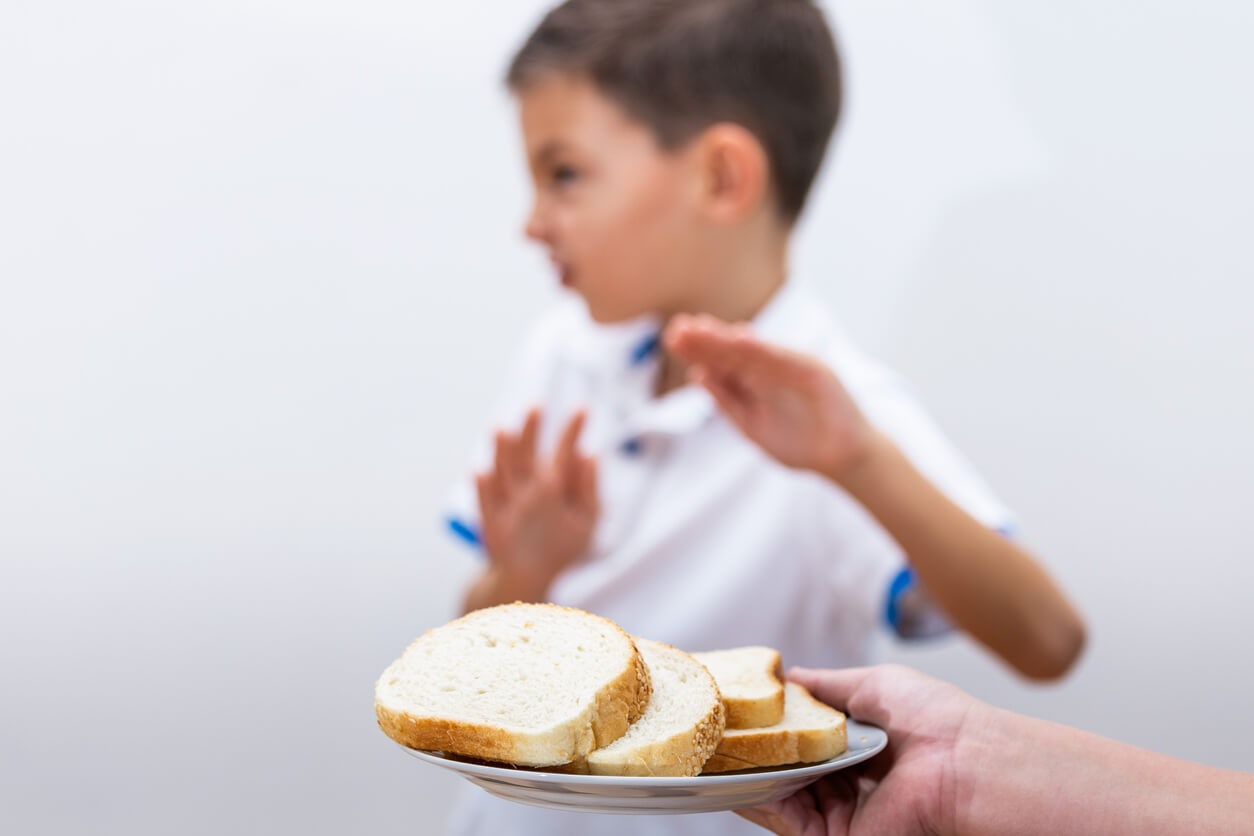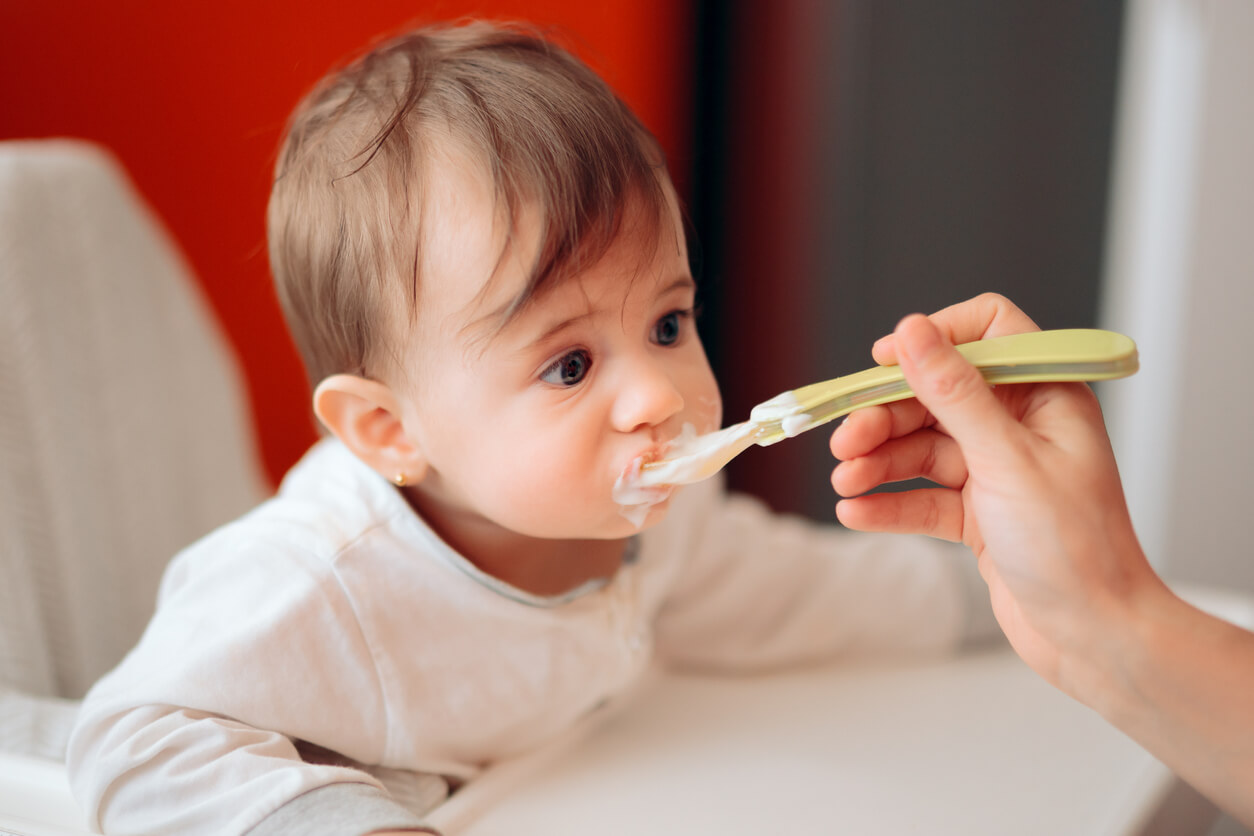Celiac Disease in Babies and Children: What You Should Know

Celiac disease is one of the most common digestive and intestinal diseases that usually develops during the first stages of life, affecting the foods that little ones can eat. Under these circumstances, a series of dietary modifications must be carried out in order to safeguard the function of the intestines, otherwise, serious consequences could be experienced. Keep reading to learn everything you need to know about celiac disease in babies and children.
It’s important to bear in mind that, with proper dietary adjustments, it’s possible to live with celiac disease without any problems. However, it’s crucial to remove all traces of gluten protein from the child’s diet. From this point on, it will be optimal to prepare a balanced menu that’s as varied as possible to avoid nutritional deficits.
The symptoms of celiac disease
When a celiac disease in babies or children develops, these little ones usually have a number of characteristic symptoms. These include diarrhea, abdominal pain, anxiety, lack of energy, and even depression. Obviously, all of these are related to gluten consumption. Weight loss is also often a significant sign.
If a baby shows any of these symptoms frequently and without apparent cause, the best thing to do is to consult a specialist. The specialist will perform a series of diagnostic tests to confirm the presence of celiac disease. Subsequently, the appropriate measures will have to be taken.
It should also be noted that in more severe cases, other signs such as the following may be present:
- Anemia
- Swelling
- Muscle cramps
- Osteoporosis
- Painful skin rashes

What to do when celiac disease in babies or children is diagnosed?
Once the diagnosis of celiac disease is confirmed, it’s important to take a series of measures regarding the child’s diet to avoid symptoms and damage to the digestive system. This is evidenced by research published in the journal Nature Reviews. It will be essential to avoid the consumption of gluten in any of its forms. Even avenin (present in oats) can cause discomfort.
Unlike other digestive problems, such as non-celiac gluten sensitivity, celiac disease patients are hypersensitive to gluten. This means that any traces of this protein in food will trigger symptoms and create a health hazard. For this reason, a series of mechanisms related to food hygiene will have to be put in place.
Similarly, it will be essential to pay attention to nutritional labeling. Many of the foods on the market state the presence or absence of gluten. Products that are free of gluten and possible cross-contamination should always be chosen, especially when it comes to infant cereals or baby food preparations.
Celiac disease and other complex intestinal diseases
At present, it’s unknown whether celiac disease can actually increase the risk of developing other complex intestinal diseases, even if the diet is modified correctly. For this reason, it’s important to take certain precautions in this regard to ensure homeostasis at the inflammatory level and avoid major problems.
In this regard, one of the best recommendations is the introduction of fermented foods with probiotics in the child’s diet at an early stage. Such products have been shown to help improve the health of the microbiota and prevent the promotion of inflammatory and oxidative mechanisms that can cause damage. Yogurts are an excellent choice. You could even consider supplementation with probiotics, after consultation with a specialist.

It’s important to be aware of digestive symptoms in children
As you can see, celiac disease in babies and children is a disease that’s reflected in symptoms that result from the ingestion of gluten, which is the protein that causes the reaction. It will be important to identify the disease as soon as possible to avoid damage to the intestinal villi, which could negatively affect the processes of digestion and absorption of nutrients.
Finally, keep in mind that a gluten-free menu is possible and not too complicated. You’ll need to be extremely attentive to nutritional labels and implement a series of hygienic methods to avoid cross-contamination that can produce adverse reactions. A healthy lifestyle is possible with a good dietary approach.
Celiac disease is one of the most common digestive and intestinal diseases that usually develops during the first stages of life, affecting the foods that little ones can eat. Under these circumstances, a series of dietary modifications must be carried out in order to safeguard the function of the intestines, otherwise, serious consequences could be experienced. Keep reading to learn everything you need to know about celiac disease in babies and children.
It’s important to bear in mind that, with proper dietary adjustments, it’s possible to live with celiac disease without any problems. However, it’s crucial to remove all traces of gluten protein from the child’s diet. From this point on, it will be optimal to prepare a balanced menu that’s as varied as possible to avoid nutritional deficits.
The symptoms of celiac disease
When a celiac disease in babies or children develops, these little ones usually have a number of characteristic symptoms. These include diarrhea, abdominal pain, anxiety, lack of energy, and even depression. Obviously, all of these are related to gluten consumption. Weight loss is also often a significant sign.
If a baby shows any of these symptoms frequently and without apparent cause, the best thing to do is to consult a specialist. The specialist will perform a series of diagnostic tests to confirm the presence of celiac disease. Subsequently, the appropriate measures will have to be taken.
It should also be noted that in more severe cases, other signs such as the following may be present:
- Anemia
- Swelling
- Muscle cramps
- Osteoporosis
- Painful skin rashes

What to do when celiac disease in babies or children is diagnosed?
Once the diagnosis of celiac disease is confirmed, it’s important to take a series of measures regarding the child’s diet to avoid symptoms and damage to the digestive system. This is evidenced by research published in the journal Nature Reviews. It will be essential to avoid the consumption of gluten in any of its forms. Even avenin (present in oats) can cause discomfort.
Unlike other digestive problems, such as non-celiac gluten sensitivity, celiac disease patients are hypersensitive to gluten. This means that any traces of this protein in food will trigger symptoms and create a health hazard. For this reason, a series of mechanisms related to food hygiene will have to be put in place.
Similarly, it will be essential to pay attention to nutritional labeling. Many of the foods on the market state the presence or absence of gluten. Products that are free of gluten and possible cross-contamination should always be chosen, especially when it comes to infant cereals or baby food preparations.
Celiac disease and other complex intestinal diseases
At present, it’s unknown whether celiac disease can actually increase the risk of developing other complex intestinal diseases, even if the diet is modified correctly. For this reason, it’s important to take certain precautions in this regard to ensure homeostasis at the inflammatory level and avoid major problems.
In this regard, one of the best recommendations is the introduction of fermented foods with probiotics in the child’s diet at an early stage. Such products have been shown to help improve the health of the microbiota and prevent the promotion of inflammatory and oxidative mechanisms that can cause damage. Yogurts are an excellent choice. You could even consider supplementation with probiotics, after consultation with a specialist.

It’s important to be aware of digestive symptoms in children
As you can see, celiac disease in babies and children is a disease that’s reflected in symptoms that result from the ingestion of gluten, which is the protein that causes the reaction. It will be important to identify the disease as soon as possible to avoid damage to the intestinal villi, which could negatively affect the processes of digestion and absorption of nutrients.
Finally, keep in mind that a gluten-free menu is possible and not too complicated. You’ll need to be extremely attentive to nutritional labels and implement a series of hygienic methods to avoid cross-contamination that can produce adverse reactions. A healthy lifestyle is possible with a good dietary approach.
All cited sources were thoroughly reviewed by our team to ensure their quality, reliability, currency, and validity. The bibliography of this article was considered reliable and of academic or scientific accuracy.
- Lindfors, K., Ciacci, C., Kurppa, K., Lundin, K., Makharia, G. K., Mearin, M. L., Murray, J. A., Verdu, E. F., & Kaukinen, K. (2019). Coeliac disease. Nature reviews. Disease primers, 5(1), 3. https://doi.org/10.1038/s41572-018-0054-z
- Wieërs, G., Belkhir, L., Enaud, R., Leclercq, S., Philippart de Foy, J. M., Dequenne, I., de Timary, P., & Cani, P. D. (2020). How Probiotics Affect the Microbiota. Frontiers in cellular and infection microbiology, 9, 454. https://doi.org/10.3389/fcimb.2019.00454
This text is provided for informational purposes only and does not replace consultation with a professional. If in doubt, consult your specialist.








